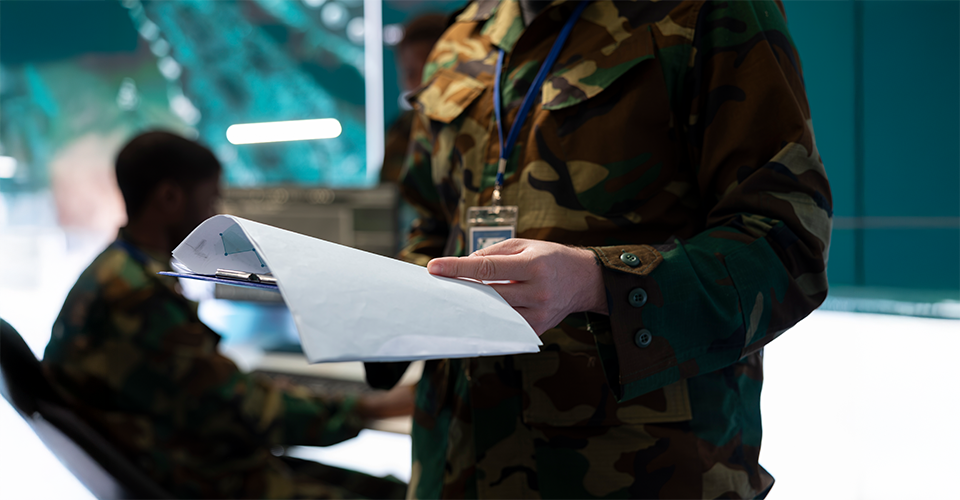 As a military member, you're going to have to relocate more than a few times in your career. Moving is one of the most stressful life events a person can experience, and when you add to the stress you already experience daily as an active service member, you can only imagine what it must be like. Thankfully, the government does lend a hand to relocating service members, and you'll be presented with several different options for moving your household goods (HHG) when you receive your PCS orders.
As a military member, you're going to have to relocate more than a few times in your career. Moving is one of the most stressful life events a person can experience, and when you add to the stress you already experience daily as an active service member, you can only imagine what it must be like. Thankfully, the government does lend a hand to relocating service members, and you'll be presented with several different options for moving your household goods (HHG) when you receive your PCS orders.
Read on to learn more about what your HHG options are and how to choose the one that's best for you and your family.
When you receive your PCS orders
Planning for your military move will begin as soon as you receive your PCS orders. To make sure your move goes as smoothly as possible, it helps to begin planning when you first learn of your impending move:
-
Contact your servicing Transportation Office right away. When you receive your PCS orders, you should contact the Transportation Office as soon as you can to arrange a counseling appointment. Since the Transportation Office near you will be responsible for handling all of the moving options and travel arrangements, get in touch with them to begin ironing out the details as soon as you can.
-
The government has a limit on how much they will ship for you. When it comes time for you to decide if you want the government to arrange for your mover or do it yourself, be aware of the maximum HHG weight the government will ship or store at their expense. In this case, the maximum weight is 18,000 pounds, meaning if your shipment exceeds this amount, you will be responsible for covering the expenses associated with any overages.
-
Overseas destinations may have smaller weight limits. If you are relocating overseas, the maximum weight allowance that the government will ship or store at their expense may vary. For example, the maximum amount of household goods that may be shipped to Japan is 4,500 pounds. If you are moving overseas ,make sure to inquire with the Transportation Office about any weight limitations.
-
How to estimate the size of your HHG shipment: For an easy way to estimate the weight of your HHG shipment, take the number of rooms in the house you are packing up and multiply it by 1,500 to give you a rough estimation of the size of your move. Please remember that this is only an estimate and you should still have a moving professional survey your household goods and provide you with a more accurate quote.
Shipping your goods with a GBL
If you choose to have your household goods shipped by the government, that means you will allow the them to designate a moving company for you and pay for the movers using a GBL, or government bill of lading. This is how most military moves are carried out. In this case, you would need to contact the Transportation Office when your travel authorization is finalized. The Transportation Office will make the necessary arrangements for your move and you will be provided with all of the details regarding your HHG shipment.
Personally arranging your move
You can choose to handle the move and contract a moving company by yourself, subsidized by many of the entitlement programs that the government offers for relocating service members, as well as the Commuted Rate Schedule for Transportation of Household Goods (CRS). If you do decide to go this route, here are a few things you should know:
-
You can still choose to move on your own even after your GBL has been authorized. If you have your GBL authorized through the Transportation Office and then change your mind and decide to personally move your HHG shipment, you can still be reimbursed for the moving expenses you incur during your relocation (for example: moving boxes, packing tape, packing wrap, rental truck, gas, etc.) up to the amount that the move would have cost had it been shipped with the GBL.
-
If you move on your own, a cost comparison will be done to determine the amount of reimbursement you'll receive. Using the aforementioned CRS, or the Commuted Rate Schedule for Transportation of Household Goods, the government will run a cost comparison between the expenses you incurred during your move and the actual cost of the move as determined by the GBL. In the event that the costs of one method exceed the costs of the other by more than $100, you will be reimbursed for the full amount of the cheaper method.
-
Don't forget your Certified Weight Tickets. If you choose to ship your HHG on your own, or with a mover you've hired yourself, you must remember to obtain the Certified Weight Tickets for your shipment to show the gross weight, tare weight and net weight of your shipment before and after your HHG are loaded, so you can be reimbursed for the proper amount.